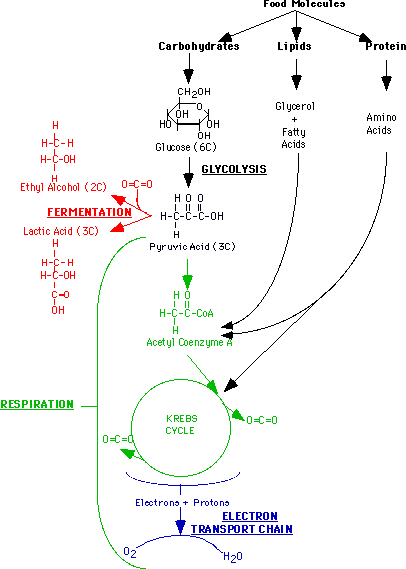Introduction
In order to survive, grow and reproduce, all organisms require an energy source. The ultimate source of the majority of energy available to living systems is sunlight, which photosynthetic autotrophs (green Plants, some Monera, some Protista) can transform through the process of photosynthesis into chemical energy in the bonds of the hexose sugar, glucose.Glucose, once synthesized, may in turn be stored as polysaccharide, converted into other complex organic molecules such as proteins, lipids or other carbohydrates. On the other hand, it may also be broken down releasing some of the stored energy to fuel the autotrophs own energy requiring processes.
Other organisms, the heterotrophs (most Monera, some Protista, all Fungi and
all Animals), cannot use sunlight directly as an energy source, but must
have in their diet complex organic molecules such as carbohydrates, lipids
and proteins which serves to supply their energy needs.
Whether autotroph or heterotroph, all organisms chemically breakdown substrates releasing energy, some of which is transformed into the bonds of ATP. The energy in ATP may in turn be used to power the energy requiring functions of the organism.
The incredible number of enzyme-catalyzed reactions which occur in living cells are collectively referred to as metabolism. Some metabolic activities, such as photosynthesis are synthetic in nature and are referred to as anabolism, while break-down processes come under the heading catabolism. Cells are able to transform energy from food materials into ATP through catabolic reactions.
To the right is a diagram of the main energy yielding reactions in eukaryotes.
